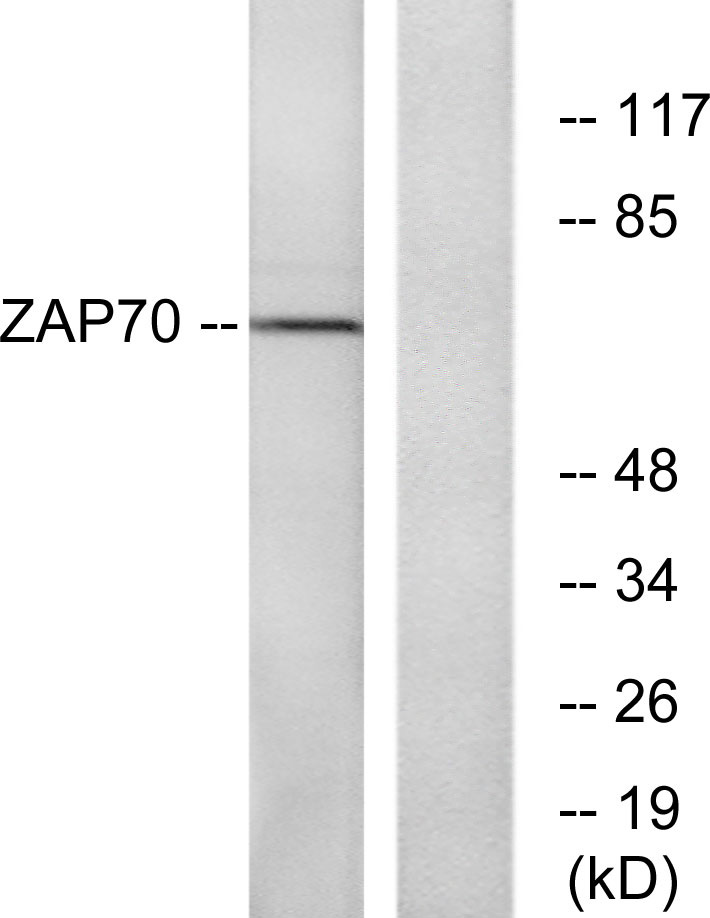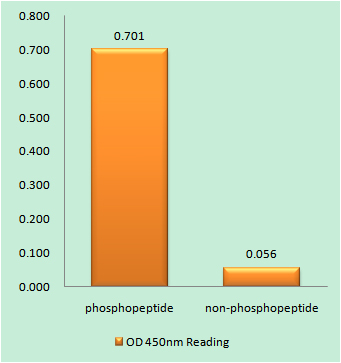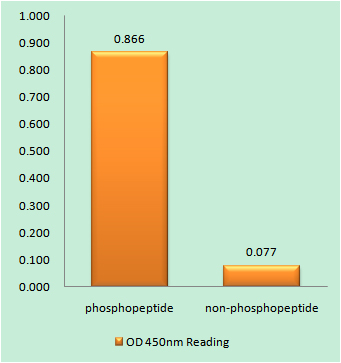- 靶点:
- ZAP-70
- 简介:
- >>Ras signaling pathway;>>NF-kappa B signaling pathway;>>Natural killer cell mediated cytotoxicity;>>Th1 and Th2 cell differentiation;>>Th17 cell differentiation;>>T cell receptor signaling pathway;>>Yersinia infection;>>PD-L1 expression and PD-1 checkpoint pathway in cancer;>>Primary immunodeficiency
- 基因名称:
- ZAP70
- 蛋白名称:
- Tyrosine-protein kinase ZAP-70
- Human Gene Id:
- 7535
- Human Swiss Prot No:
- P43403
- Mouse Gene Id:
- 22637
- Mouse Swiss Prot No:
- P43404
- 免疫原:
- The antiserum was produced against synthesized peptide derived from human ZAP-70. AA range:286-335
- 特异性:
- ZAP-70 Polyclonal Antibody detects endogenous levels of ZAP-70 protein.
- 组成:
- Liquid in PBS containing 50% glycerol, 0.5% BSA and 0.02% sodium azide.
- 来源:
- Polyclonal, Rabbit,IgG
- 稀释:
- WB 1:500 - 1:2000. IHC 1:100 - 1:300. IF 1:200 - 1:1000. ELISA: 1:10000. Not yet tested in other applications.
- 纯化工艺:
- The antibody was affinity-purified from rabbit antiserum by affinity-chromatography using epitope-specific immunogen.
- 浓度:
- 1 mg/ml
- 储存:
- -15°C to -25°C/1 year(Do not lower than -25°C)
- 其他名称:
- ZAP70;SRK;Tyrosine-protein kinase ZAP-70;70 kDa zeta-chain associated protein;Syk-related tyrosine kinase
- 实测条带:
- 70kD
- 背景:
- This gene encodes an enzyme belonging to the protein tyrosine kinase family, and it plays a role in T-cell development and lymphocyte activation. This enzyme, which is phosphorylated on tyrosine residues upon T-cell antigen receptor (TCR) stimulation, functions in the initial step of TCR-mediated signal transduction in combination with the Src family kinases, Lck and Fyn. This enzyme is also essential for thymocyte development. Mutations in this gene cause selective T-cell defect, a severe combined immunodeficiency disease characterized by a selective absence of CD8-positive T-cells. Two transcript variants that encode different isoforms have been found for this gene. [provided by RefSeq, Jul 2008],
- 功能:
- catalytic activity:ATP + a [protein]-L-tyrosine = ADP + a [protein]-L-tyrosine phosphate.,disease:Defects in ZAP70 are the cause of selective T-cell defect (STD) [MIM:176947]. STD is an autosomal recessive form of severe combined immunodeficiency characterized by a selective absence of CD8-type T-cells.,domain:The SH2 domain binds to the phosphorylated tyrosine-based activation motif (TAM) of CD3Z.,function:Plays a role in T-cell development and lymphocyte activation. Essential for TCR-mediated IL-2 production. Isoform 1 induces TCR-mediated signal transduction, isoform 2 does not.,online information:ZAP70 mutation db,PTM:Phosphorylated on tyrosine residues upon T-cell antigen receptor (TCR) stimulation. Tyr-319 phosphorylation is essential for full activity.,similarity:Belongs to the protein kinase superfamily. Tyr protein kinase family. SYK/ZAP-70 subfamily.,similarity:Contains 1 prote
- 细胞定位:
- Cytoplasm . Cell membrane ; Peripheral membrane protein . In quiescent T-lymphocytes, it is cytoplasmic. Upon TCR activation, it is recruited at the plasma membrane by interacting with CD247/CD3Z. Colocalizes together with RHOH in the immunological synapse. RHOH is required for its proper localization to the cell membrane and cytoskeleton fractions in the thymocytes (By similarity). .
- 组织表达:
- Expressed in T- and natural killer cells. Also present in early thymocytes and pro/pre B-cells.
Efficacy and safety of mesenchymal stem cell therapy for ovarian ageing in a mouse model Stem Cell Research & Therapy Pei Wendi IHC Mouse 1:300 ovarian tissue
货号:YT4931
- June 19-2018
- WESTERN IMMUNOBLOTTING PROTOCOL
- June 19-2018
- IMMUNOHISTOCHEMISTRY-PARAFFIN PROTOCOL
- June 19-2018
- IMMUNOFLUORESCENCE PROTOCOL
- September 08-2020
- FLOW-CYTOMEYRT-PROTOCOL
- May 20-2022
- Cell-Based ELISA│解您多样本WB检测之困扰
- July 13-2018
- CELL-BASED-ELISA-PROTOCOL-FOR-ACETYL-PROTEIN
- July 13-2018
- CELL-BASED-ELISA-PROTOCOL-FOR-PHOSPHO-PROTEIN
- July 13-2018
- Antibody-FAQs
- 产品图片

- Immunohistochemistry analysis of paraffin-embedded human breast carcinoma tissue, using ZAP-70 Antibody. The picture on the right is blocked with the synthesized peptide.

- Western blot analysis of lysates from Jurkat cells, using ZAP-70 Antibody. The lane on the right is blocked with the synthesized peptide.


